Barone, M. et als.
European Journal of Plastic Surgery, April 2018, Volume 41, Issue 2, pp 109–118
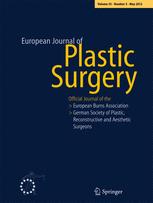 A patient’s perspective is usually measured by patient-reported outcome instruments, which are becoming increasingly relevant to current research on clinical outcomes. The aims of our review were to identify studies that evaluated patient satisfaction after gynecomastia correction, analyze existing questionnaires, and summarize the development, psychometric properties and content of the questionnaires.
A patient’s perspective is usually measured by patient-reported outcome instruments, which are becoming increasingly relevant to current research on clinical outcomes. The aims of our review were to identify studies that evaluated patient satisfaction after gynecomastia correction, analyze existing questionnaires, and summarize the development, psychometric properties and content of the questionnaires.
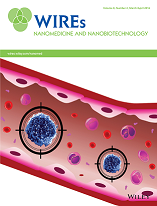 This advanced review will discuss the history of implants used in breast reconstruction and augmentation, the most frequently performed plastic surgery today. Currently, only silicone rubber-based silica nanocomposite implants are available in the United States. The most prevalent issues involving breast implants include capsular contracture, gel bleed, implant rupture, and infection. The goal of this review is to survey the literature from the perspective of material science.
This advanced review will discuss the history of implants used in breast reconstruction and augmentation, the most frequently performed plastic surgery today. Currently, only silicone rubber-based silica nanocomposite implants are available in the United States. The most prevalent issues involving breast implants include capsular contracture, gel bleed, implant rupture, and infection. The goal of this review is to survey the literature from the perspective of material science.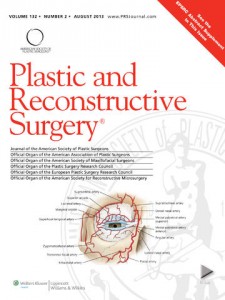 Gluteal augmentation with fat transplantation is increasing in demand but has been associated with a concerning number of fatality reports. Despite these reports, various surgeons have safely performed gluteal fat transplantation on a large number of patients with no reported mortality. The important aspects of safely performing gluteal fat transplantation are reviewed. Proper patient selection, favorable instrumentation, patient positioning, proper technique, and knowledge of anatomy are critical to improving the safety of this procedure. Adherence to these key principles should allow a reduction in mortality from this procedure, which would safely allow its continued offering in the setting of increasingly high demand.
Gluteal augmentation with fat transplantation is increasing in demand but has been associated with a concerning number of fatality reports. Despite these reports, various surgeons have safely performed gluteal fat transplantation on a large number of patients with no reported mortality. The important aspects of safely performing gluteal fat transplantation are reviewed. Proper patient selection, favorable instrumentation, patient positioning, proper technique, and knowledge of anatomy are critical to improving the safety of this procedure. Adherence to these key principles should allow a reduction in mortality from this procedure, which would safely allow its continued offering in the setting of increasingly high demand.
 Las heridas por quemadura causan niveles altos de morbilidad y mortalidad en todo el mundo. Los pacientes con quemaduras son particularmente vulnerables a las infecciones; más del 75% de todas las muertes debido a quemaduras (después de la reanimación inicial) son resultado de la infección. Los antisépticos son agentes tópicos que actúan para prevenir el crecimiento de microorganismos. Se utiliza una amplia variedad con la intención de prevenir la infección y promover la cicatrización de las heridas por quemadura.
Las heridas por quemadura causan niveles altos de morbilidad y mortalidad en todo el mundo. Los pacientes con quemaduras son particularmente vulnerables a las infecciones; más del 75% de todas las muertes debido a quemaduras (después de la reanimación inicial) son resultado de la infección. Los antisépticos son agentes tópicos que actúan para prevenir el crecimiento de microorganismos. Se utiliza una amplia variedad con la intención de prevenir la infección y promover la cicatrización de las heridas por quemadura.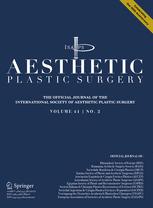 Liposuction is the most performed surgical procedure in Brazil and the second in the world. In recent years, new technologies have been developed in an attempt to improve liposuction, such as laser. The objective of this study is to evaluate the efficacy and safety of laser-assisted liposuction (LAL) compared to traditional liposuction through a systematic review of the literature.
Liposuction is the most performed surgical procedure in Brazil and the second in the world. In recent years, new technologies have been developed in an attempt to improve liposuction, such as laser. The objective of this study is to evaluate the efficacy and safety of laser-assisted liposuction (LAL) compared to traditional liposuction through a systematic review of the literature.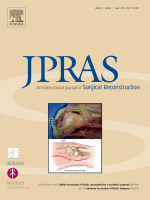 Rejuvenation of the dorsal surface of the hand for various conditions, such as cutaneous dyschromia, fine wrinkling, skin laxity, visible extensor tendons, and varicosities appear vital to prevent wrist and digit flexion resulting from hiding of the aged appearance of the hand. Numerous fillers have been applied to re-contour the aging dorsal surface of the hand and the results were variable. The micro-autologous fat transplantation (MAFT) technique, proposed by Lin et al. in 2006, has demonstrated its feasibility in facial rejuvenation. In this study, we applied the MAFT technique for the rejuvenation of the dorsal portion of the hand.
Rejuvenation of the dorsal surface of the hand for various conditions, such as cutaneous dyschromia, fine wrinkling, skin laxity, visible extensor tendons, and varicosities appear vital to prevent wrist and digit flexion resulting from hiding of the aged appearance of the hand. Numerous fillers have been applied to re-contour the aging dorsal surface of the hand and the results were variable. The micro-autologous fat transplantation (MAFT) technique, proposed by Lin et al. in 2006, has demonstrated its feasibility in facial rejuvenation. In this study, we applied the MAFT technique for the rejuvenation of the dorsal portion of the hand.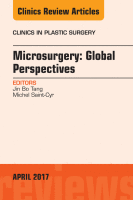







 Sitio web publicado el
Sitio web publicado el
Los lectores comentan